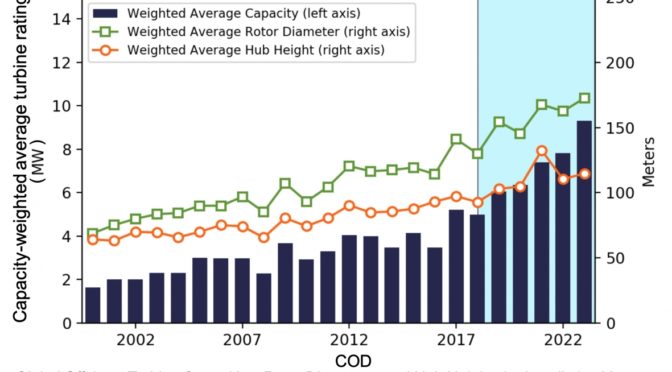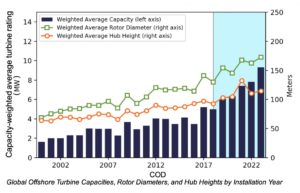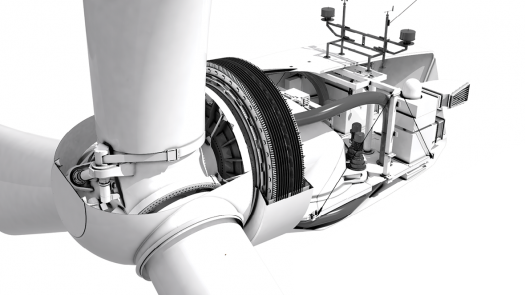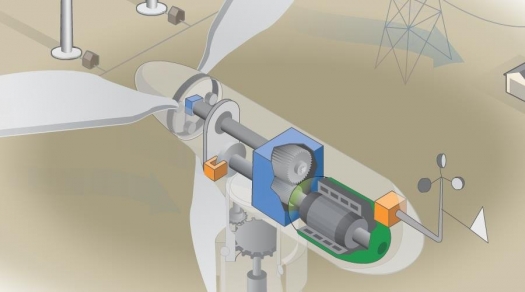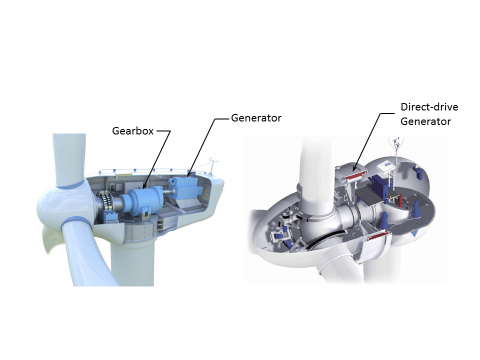The U.S. Department of Energy (DOE) selected four wind power projects totaling up to $8 million to develop next-generation wind turbine drivetrain technologies that will facilitate the continued growth of wind turbines for both land-based tall wind power and offshore wind farm applications.
These projects will develop more efficient, smaller, and lighter-weight generators that will lower costs and make wind power more affordable.
Each of the selected projects will receive up to $400,000 to design a wind turbine generator that can be scaled up to at least 10 megawatts to capitalize on the trend of larger, more powerful wind turbines, especially for offshore applications.
Two projects are developing “direct drive” permanent magnet generator designs that are smaller, lighter, less expensive, more reliable, more efficient, and use less rare earth content than conventional gearbox designs.
The drivetrain is the “powerhouse” of a wind turbine, containing the generator and gearbox which converts the torque—or rotation of the blades—into electricity.
Most wind turbine drivetrains currently use generators that are connected to gearboxes, which speed up the rotation from the relatively slow speed of the turbine’s blades (typically 5–15 rotations per minute for a modern machine), to the high speeds (1,000–1,800 rotations per minute) needed to generate electricity using a high-speed induction generator. Having all of those moving parts makes the gearbox one of the highest-maintenance parts of a wind turbine.
One alternative is to use a “direct drive” generator that can generate electricity at much lower speeds. Direct drive systems do not require a gearbox and therefore have fewer moving parts. However, they usually use permanent magnets, which require expensive, heavy, rare earth materials such as neodymium and dysprosium, and they typically require heavier generators than geared machines for a given turbine capacity.
DOE is funding four projects to develop high-efficiency, lightweight wind turbine generators, all of which are developing direct drive technologies. Two of these generators are “superconducting” and do not use permanent magnets or rare earth materials.
Regardless of whether it’s direct drive or geared, these components are massive (200–320 tons for a 10-megawatt (MW) turbine generator system), and as they are positioned on the top of the wind turbine’s tower, this also increases the weight and cost of the tower and foundation. They also require large, expensive cranes for installation, and have transportation constraints due to their weight.
Wind turbine tower heights have grown from 60 to over 80 meters, and are expected to exceed 100 meters (330 feet) in the coming years, adding to these challenges.
At the same time, average wind turbine capacities have increased from 1 MW to 2–3 MW on land and 5–6 MW offshore, with plans for 10–12-MW offshore wind turbines by the mid-2020s. This increase in capacity means more powerful machines that can generate more electricity, but it also means larger and heavier components.
And as we look to the future with floating offshore wind platforms to access wind resources where the water is too deep for conventional foundations, lightweighting while maintaining high efficiency becomes even more important. Floating foundations would need to be much larger (and therefore more expensive) to support heavier components on top of the wind turbine tower.
DOE is funding four projects to reduce mass and cost while increasing the efficiency of wind turbine generators. These projects will design generators that can be scaled up to at least 10 megawatts to capitalize on the trend of larger, more powerful wind turbines, for tall wind and offshore applications.
